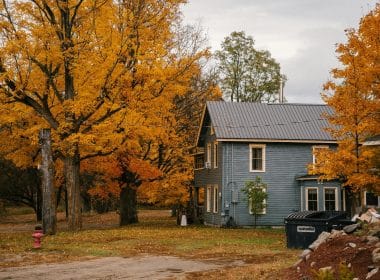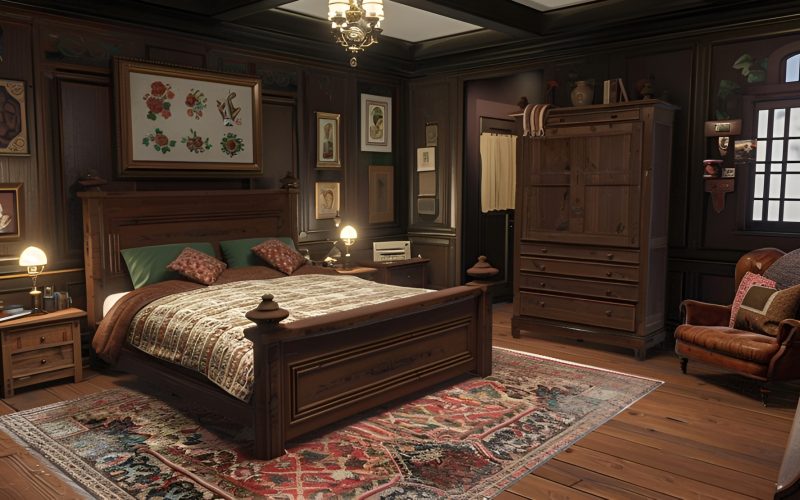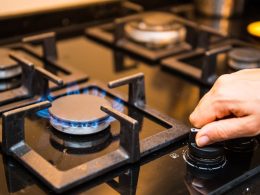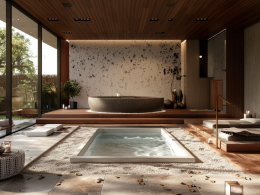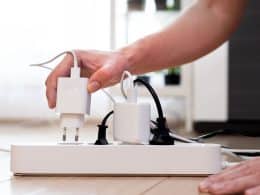When designing a kitchen, choosing materials is crucial for functionality and aesthetics.
While glass has recently gained popularity for its sleek, modern appearance, it may not be the most practical option for every homeowner.
Before incorporating glass into your kitchen design, it’s essential to consider the numerous disadvantages of this material.
From safety risks and constant cleaning to high costs and limited durability, glass surfaces can present various challenges.
In this comprehensive guide, we’ll explore ten significant drawbacks of using glass in the kitchen and discuss alternative materials that offer durability, ease of maintenance, and style.
By weighing the pros and cons of glass and considering your personal preferences, you’ll be well-equipped to decide when selecting the perfect materials for your kitchen renovation project.
Disadvantages of Using Glass in the Kitchen
Plenty of risks are involved with positioning glass in the pantry doors and other kitchen areas; several home designer experts suggest against using it.
To support the authority of not doing so, we have listed a few reasons to avoid it.
1. Fragility and Safety Risks
Glass is a brittle material that can easily break or shatter upon impact, posing a significant safety risk in the kitchen.
Accidents can happen, and if heavy objects or sharp utensils come into contact with glass surfaces, they can cause serious damage and create dangerous shards that are difficult to clean up thoroughly.
This is particularly concerning for glass countertops or flooring, where the risk of breakage is higher due to the frequent use and movement of items in these areas.
2. Slippery Surface and Potential for Accidents
Glass surfaces can become slippery when wet, increasing the risk of accidents in the kitchen.
This is especially true for glass flooring, which can be hazardous if water or other liquids are spilled.
The smooth surface of the glass can also make it difficult to maintain a secure grip on items, potentially leading to drops and breakages.
Homeowners with young children or elderly family members should be particularly cautious when considering glass surfaces in the kitchen, as the risk of slips and falls may be higher.

3. Fingerprints, Smudges, and Constant Cleaning
One of the most significant drawbacks of glass surfaces in the kitchen is their propensity to show fingerprints, smudges, and water spots.
The sleek and shiny glass appearance is quickly marred by everyday use, requiring frequent cleaning to maintain a pristine look.
This can be a time-consuming and frustrating task for homeowners who want to keep their kitchen looking spotless.
Additionally, some glass surfaces may require special cleaning products to avoid streaks or damage, adding to the overall maintenance burden.
4. Special Maintenance Requirements
Caring for glass surfaces in the kitchen often involves more than just regular cleaning.
To keep the glass looking its best, homeowners may need to use specific cleaning products designed for glass use.
These products can be more expensive than general-purpose cleaners and may require extra effort to apply correctly.
Failure to use the right products or techniques can result in streaks, smears, or even permanent damage to the glass surface, detracting from the kitchen’s overall appearance.
5. Glare and Visual Discomfort
Kitchen glass surfaces can create glare when exposed to bright light, whether from natural sunlight or artificial lighting.
This glare can be uncomfortable for the eyes and may make it difficult to work in the kitchen for extended periods.
The reflective nature of glass can also create visual distortions, making it harder to see the true colors and details of objects placed on the surface.
The constant glare and visual discomfort can be a significant drawback for homeowners who spend a lot of time in the kitchen.
6. High Cost of Quality Glass
Incorporating high-quality, tempered glass into a kitchen design can be expensive compared to other materials like laminate or tile.
The cost of glass countertops, backsplashes, or cabinet doors can quickly add up, making it a significant investment for homeowners.
While the sleek and modern look of glass may be appealing, it is essential to weigh the cost against other factors, such as durability and practicality.
Homeowners working with a tight budget may find that glass is not the most cost-effective option for their kitchen renovation.
7. Limited Durability Compared to Other Materials
Although tempered glass is stronger than regular glass, it is still less durable than materials like granite or quartz for countertops.
Glass surfaces can scratch or chip over time, especially with frequent use and exposure to sharp objects.
This lack of long-term durability can be a concern for homeowners who want their kitchen surfaces to withstand the test of time without showing signs of wear and tear.
In comparison, materials like granite or quartz are more resistant to scratches and chips, making them a more durable choice for kitchen countertops.
8. Susceptibility to Thermal Shock
Glass is susceptible to thermal shock, which occurs when the material is exposed to sudden temperature changes.
In the kitchen, this can happen when a hot pot or pan is placed directly on a glass surface or when cold liquids come into contact with a warm glass countertop.
Thermal shock can cause the glass to crack or shatter, leading to costly repairs or replacements.
To avoid this, homeowners must be cautious when using glass surfaces near heat sources and ensure that hot items are placed on heat-resistant trivets or mats.

9. Noisy Nature of Glass Surfaces
Kitchen glass items, such as dishes, glasses, and cookware, can be noisy when stacked or handled.
The clinking and clanging of glassware can be disruptive and create an unpleasant atmosphere in the kitchen.
This can be particularly bothersome for homeowners who enjoy a quiet and peaceful cooking experience or those who have open-concept kitchens where noise can easily travel to other home areas.
While this may not be a major concern for everyone, it is worth considering for those sensitive to noise.
10. Aesthetic Limitations and Personal Preferences
While glass can create a sleek and modern look in the kitchen, some homeowners may find it too cold or sterile in appearance.
The lack of warmth and texture that glass provides can be a drawback for those who prefer a more inviting and cozy atmosphere in their kitchen.
Additionally, the reflective nature of glass can make it challenging to incorporate into certain design styles, such as rustic or traditional kitchens.
Homeowners should carefully consider their personal preferences and the overall aesthetic of their home before committing to glass surfaces in the kitchen.
Ideal Surfaces for Kitchen Countertops and Work Areas
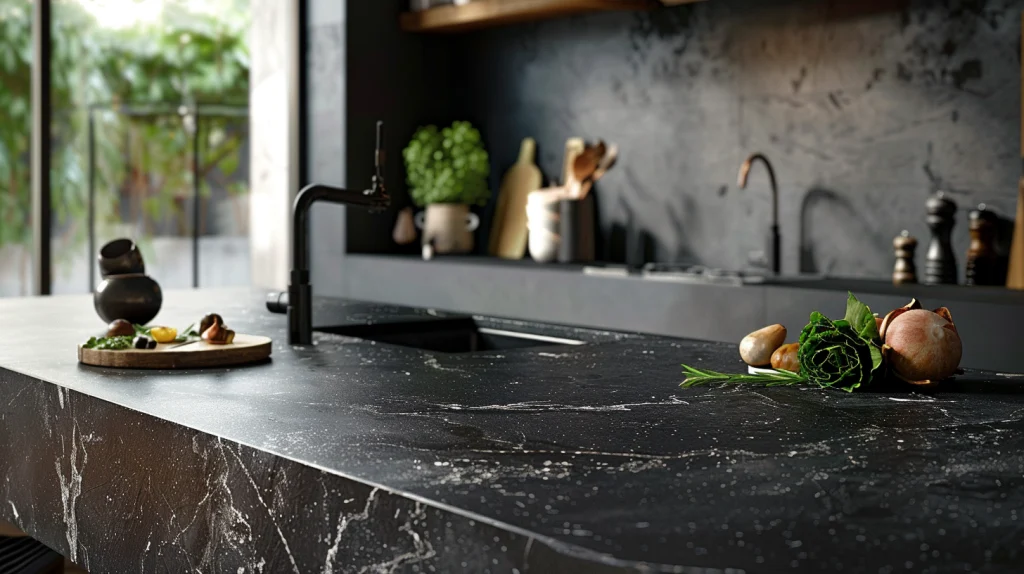
When considering alternative materials for kitchen countertops and work areas, several options offer durability, heat resistance, and ease of maintenance:
1. Granite: Known for its strength and durability, granite is a popular choice for kitchen countertops. It is also heat-resistant and scratch-resistant and available in various colors and patterns.
2. Quartz: Engineered quartz countertops offer the beauty of natural stone with added durability and low maintenance requirements. They are non-porous, resistant to stains and scratches, and come in various colors and designs.
3. Solid Surface: Made from a blend of acrylic and natural materials, solid-surface countertops provide a seamless look, are easy to clean and maintain, and are resistant to stains and scratches.
4. Stainless Steel: For a professional and modern look, stainless steel countertops are a great option. They are heat-resistant, durable, easy to clean, and ideal for busy kitchens.
5. Butcher Block: Wooden butcher block countertops offer the kitchen a warm and natural look. They are durable and can be sanded and refinished if scratches or stains occur.
Conclusion
Incorporating glass into a kitchen design can create a sleek and modern look, but it is crucial to consider the various disadvantages before making a final decision.
From the fragility and safety risks to the constant cleaning required to maintain a pristine appearance, glass surfaces can present numerous challenges for homeowners.
The high cost of quality glass, combined with its limited durability and susceptibility to thermal shock, may make it a less practical choice than other materials.
Additionally, the noisy nature of glass and its potential aesthetic limitations should be considered when deciding on the best materials for a kitchen renovation.
By selecting materials that offer durability, ease of maintenance, and a style that complements their personal preferences, homeowners can create a functional and inviting kitchen that will stand the test of time.
We hope this guide helps you make the smart choice to finalize the final outfit for your kitchen in the coming days.

